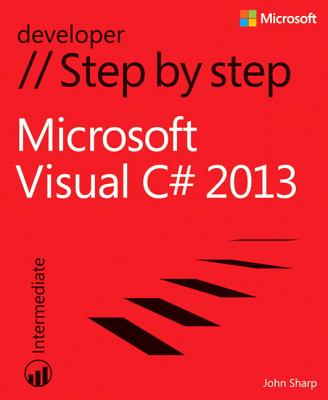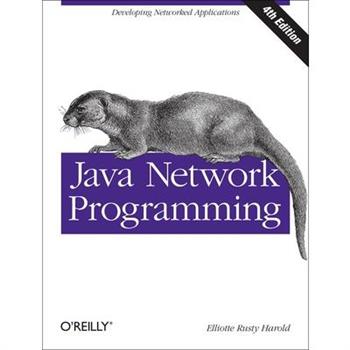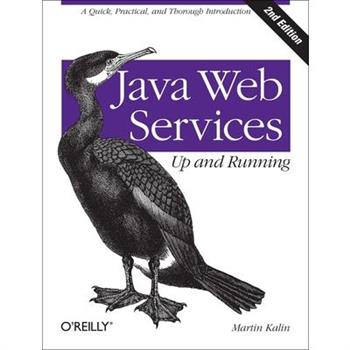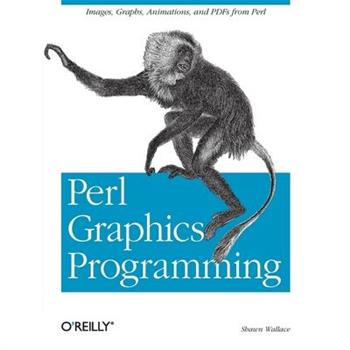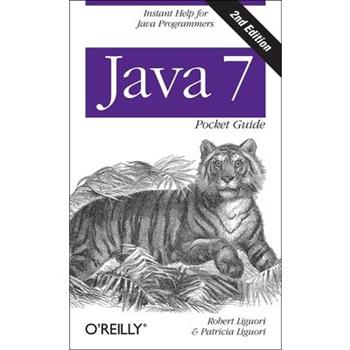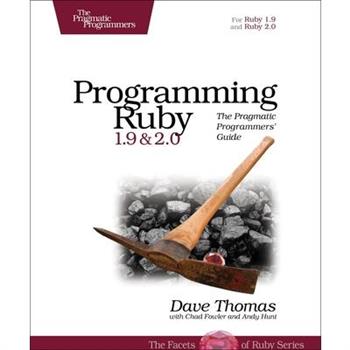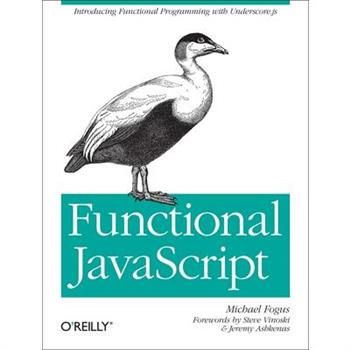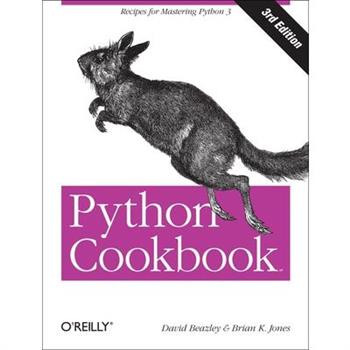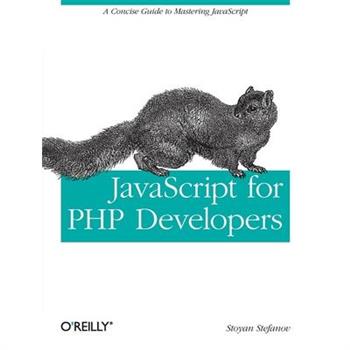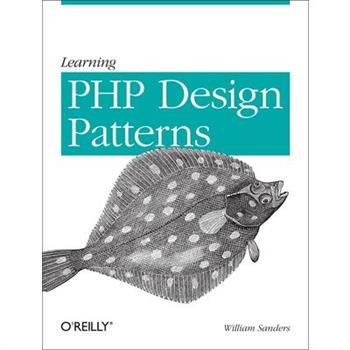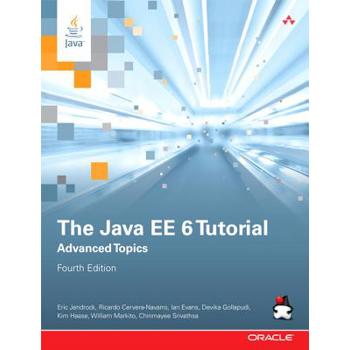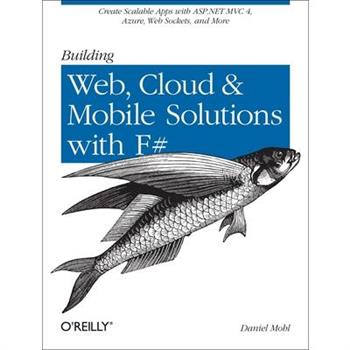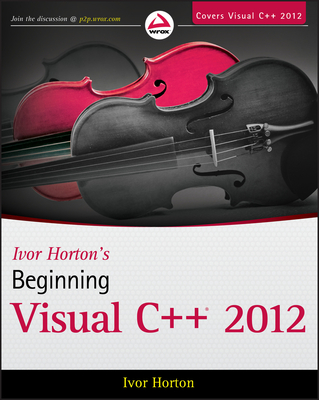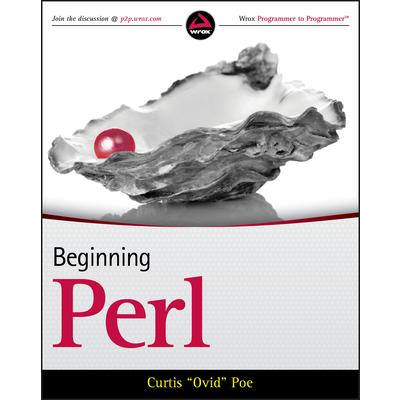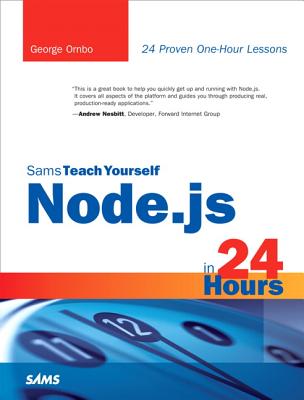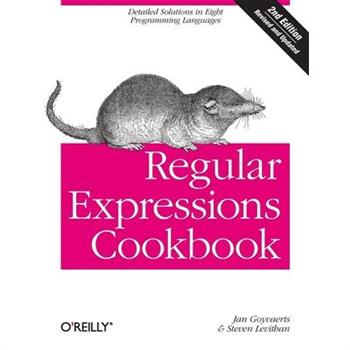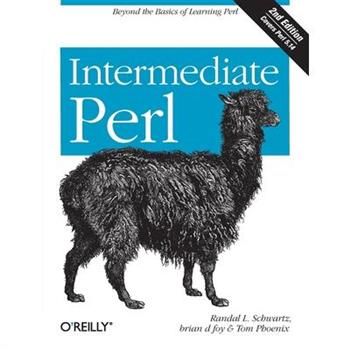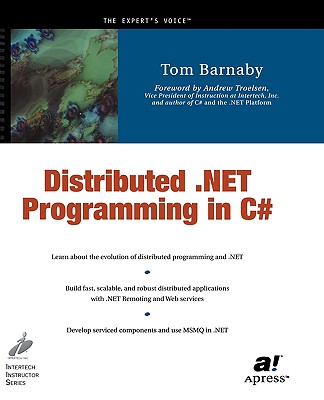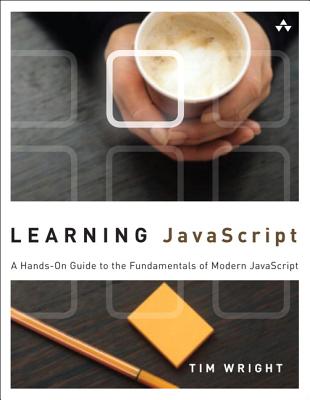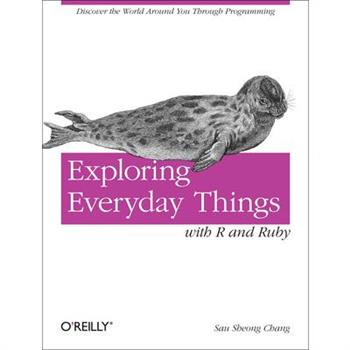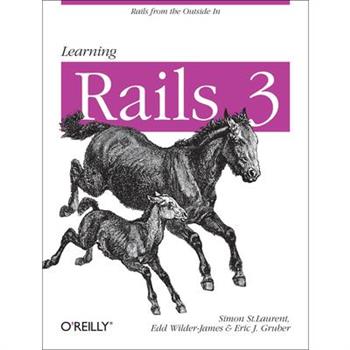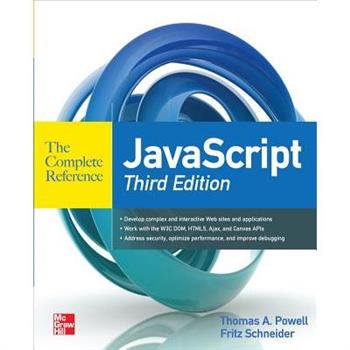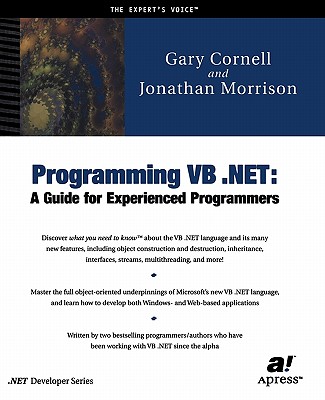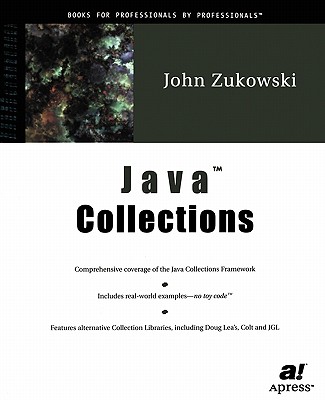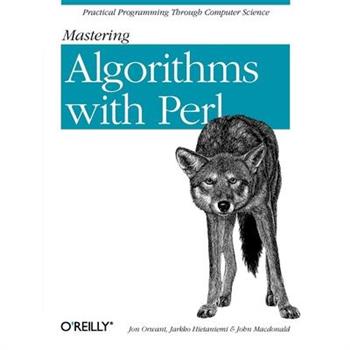Microsoft Visual C# 2013 Step by Step
Your hands-on guide to Visual C# fundamentals Expand your expertise--and teach yourself the fundamentals of Microsoft Visual C# 2013. If you have previous programming experience but are new to Visual C# 2013, this tutorial delivers the step-by-step guidance and coding exercises you need to master core topics and techniques. Discover how to: Create and debug C# applications in Visual Studio 2013 Work with variables, identifiers, statements, operators, and methods Create interfaces and define abstract classes Write robust code that can catch and handle exceptions Display and edit data using data binding with Microsoft ADO.NET Entity Framework Respond to user input and touchscreen gestures Handle events arising from multiple sources Develop your first Windows 8.1 apps
Java Network Programming
This practical guide provides a complete introduction to developing network programs with Java. You'll learn how to use Java's network class library to quickly and easily accomplish common networking tasks such as writing multithreaded servers, encrypting communications, broadcasting to the local network, and posting data to server-side programs. Author Elliotte Rusty Harold provides complete working programs to illustrate the methods and classes he describes. This thoroughly revised fourth edition covers REST, SPDY, asynchronous I/O, and many other recent technologies. Explore protocols that underlie the Internet, such as TCP/IP and UDP/IP Learn how Java's core I/O API handles network input and output Discover how the InetAddress class helps Java programs interact with DNS Locate, identify, and download network resources with Java's URI and URL classes Dive deep into the HTTP protocol, including REST, HTTP headers, and cookies Write servers and network clients, using Java's low-level socket classes Manage many connections at the same time with the nonblocking I/O
Java Web Services Up and Running
Learn how to develop REST-style and SOAP-based web services and clients with this quick and thorough introduction. This hands-on book delivers a clear, pragmatic approach to web services by providing an architectural overview, complete working code examples, and short yet precise instructions for compiling, deploying, and executing them. You'll learn how to write services from scratch and integrate existing services into your Java applications. With greater emphasis on REST-style services, this second edition covers HttpServlet, Restlet, and JAX-RS APIs; jQuery clients against REST-style services; and JAX-WS for SOAP-based services. Code samples include an Apache Ant script that compiles, packages, and deploys web services. Learn differences and similarities between REST-style and SOAP-based services Program and deliver RESTful web services, using Java APIs and implementations Explore RESTful web service clients written in Java, JavaScript, and Perl Write SOAP-based web services with an emphasis on the application level Examine the handler and transport levels in SOAP-based messaging Learn wire-level security in HTTP(S), users/roles security, and WS-Security Use a Java Application Server (JAS) as an alternative to a standalone web server
Perl Graphics Programming
Graphics programmers aren't the only ones who need to be proficient with graphics. Web and applications programmers know that a dull web page can be quickly transformed into one that's interesting and lively with the use of well-planned graphics. And fortunately, you don't need the skills of a fulltime graphics programmer to use graphics effectively. From access counters and log report graphs to scientific plots and on-the-fly animated GIFs, graphics scripting is within the grasp of most web programmers. Using open source software, like Perl, you have the power to dynamically generate graphics based on user input and activity, easily manipulate graphics content, and optimize graphics for compression and quality. Geared toward Perl users and webmasters, Perl Graphics Programming focuses on open-source scripting programs that manipulate graphics files for use on the Web. The book demystifies the manipulation of graphics formats for newcomers to the Web with a practical, resource-like approach. With this book you'll learn to: Generate dynamic web graphics with charts, tables, and buttons Automate graphics tasks (thumbnails and borders) Create dynamics web documents (PDF, Postscript) Produce rich Internet experiences with Flash and SVG You'll begin with a tour of the most common web graphic file formats--PNG, JPEG, GIF, SWF, SVG, Postscript and PDF--then you'll explore the most powerful tools and Perl modules available for manipulating these graphics, such as GD, PerlMagick, and GIMP. Included in this part of the book is a thorough description of the Ming module for creating on-the-fly Flash files. Next, a "cookbook" section includes practical, all purpose recipes: GIF animation, generating images within a dynamic application, communicating between SWF front-end and Perl back-end, XSLT transformations, compression, and much more. Perl programmers naturally turn to Perl to tackle whatever challenge they have at hand, and graphics programming is no exception. Perl Graphics Programming provides all the tools you need to begin programming and designing graphics for the Web immediately. This book will change how you think about generating and manipulating graphics for the Web.
User Interfaces in C#
.NET User Interfaces in C#: Windows Forms and Custom Controls is a comprehensive look at cutting-edge user interface programming. It goes far beyond other .NET titles, describing how to extend .NET controls, create data binding strategies, program graphics, and code UI "intelligence" with context-sensitive help and dynamic agents.
C Programming Absolute Beginner's Guide
Updated for C11 Write powerful C programs...without becoming a technical expert! This book is the fastest way to get comfortable with C, one incredibly clear and easy step at a time. You'll learn all the basics: how to organize programs, store and display data, work with variables, operators, I/O, pointers, arrays, functions, and much more. C programming has neverbeen this simple! Who knew how simple C programming could be? This is today's best beginner's guide to writing C programs-and to learning skills you can use with practically any language. Its simple, practical instructions will help you start creating useful, reliable C code, from games to mobile apps. Plus, it's fully updated for the new C11 standard and today's free, open source tools! Here's a small sample of what you'll learn: - Discover free C programming tools for Windows, OS X, or Linux - Understand the parts of a C program and how they fit together - Generate output and display it on the screen - Interact with users and respond to their input - Make the most of variables by using assignments and expressions - Control programs by testing data and using logical operators - Save time and effort by using loops and other techniques - Build powerful data-entry routines with simple built-in functions - Manipulate text with strings - Store information, so it's easy to access and use - Manage your data with arrays, pointers, and data structures - Use functions to make programs easier to write and maintain - Let C handle all your program's math for you - Handle your computer's memory as efficiently as possible - Make programs more powerful with preprocessing directives
Java Pocket Guide
When you need quick answers for developing or debugging Java programs, this pocket guide provides a handy reference to the standard features of the Java programming language and its platform. You'll find helpful programming examples, tables, figures, and lists, as well as supplemental information about topics including the Java Scripting API, third-party tools, and the basics of the Unified Modeling Language (UML). Updated for new features through Java SE 7, this little book is an ideal companion, whether you're in the office, in the lab, or on the road. Quickly find Java language details, such as naming conventions, fundamental types, and object-oriented programming elements Get details on the Java SE 7 platform, including development basics, memory management, concurrency, and generics Browse through basic information on NIO 2.0, the G1 Garbage Collector, and Project Coin (JSR-334) features Get supplemental references to development, CM, and test tools; libraries; IDEs; and Java-related scripting languages Find information to help you prepare for the Oracle Certified Associate Java SE 7 Programmer I exam
Programming Ruby 1.9 & 2.0
Ruby is the fastest growing and most exciting dynamic language out there. If you need to get working programs delivered fast, you should add Ruby to your toolbox. This book is the only complete reference for both Ruby 1.9 and Ruby 2.0, the very latest version of Ruby. 2013 marks the 20th anniversary of the Ruby language. We're proud that throughout its history, we've continued to cover the latest version of Ruby. Would you like to go from first idea to working code much, much faster? Do you currently spend more time satisfying the compiler instead of your clients or end users? Are you frustrated with demanding languages that seem to get in your way, instead of getting the work done? Are you using Rails, and want to dig deeper into the underlying Ruby language? If so, then we've got a language and book for you! Ruby is a fully object-oriented language, much like the classic object-oriented language, Smalltalk. Like Smalltalk, it is dynamically typed (as opposed to Java or C++), but unlike Smalltalk, Ruby features the same conveniences found in modern scripting languages such as Perl and Python. The combination of the power of a pure object-oriented language with the convenience of a scripting language makes Ruby a favorite tool of intelligent, forward-thinking programmers. The Pickaxe contains four major sections: An acclaimed tutorial on using Ruby. The definitive reference to the language. Complete documentation of all built-in classes, modules, and methods. Complete descriptions of all 97 standard libraries. This is the reference manual for Ruby, including a description of all the standard library modules, a complete reference to all built-in classes and modules (including all the new and changed methods introduced by Ruby 1.9, 1.9.2, 1.9.3, and 2.0). It also includes all the new and changed syntax and semantics introduced since Ruby 1.8. Learn about the new parameter passing rules, local variable scoping in blocks, fibers, and the new block declaration syntax, among other exciting new features. About Ruby 2.0 Ruby 2.0 is a minor update to Ruby 1.9, unlike the more major updates from Ruby 1.8 to Ruby 1.9. The major language changes in Ruby 2.0 are the addition of keyword arguments and the change to use UTF-8 as the default source file encoding. There are a number of additions to the standard library, including: @Enumerator:: Lazy@, which adds support for lazy access to potentially infinite lists. Refinements allow you to encapsulate changes to third-party classes, and scope their application to individual source files, preventing your changes from polluting the global application. You'll also find that Ruby 2 is faster, and has memory management improvements that make it more server-friendly. All told, there are over 110 sections of the book that have been flagged and cross-linked to indicate 2.0 content. What You Need This book assumes you have a basic understanding of object-oriented programming. In general, Ruby programmers tend to favor the the command line for running their code, and they tend to use text editors rather than IDEs. * Ruby runs on Windows, Linux, and Macs.
Functional Javascript
How can you overcome JavaScript language oddities and unsafe features? With this book, you'll learn how to create code that's beautiful, safe, and simple to understand and test by using JavaScript's functional programming support. Author Michael Fogus shows you how to apply functional-style concepts with Underscore.js, a JavaScript library that facilitates functional programming techniques. Sample code is available on GitHub at https: //github.com/funjs/book-source. Fogus helps you think in a functional way to help you minimize complexity in the programs you build. If you're a JavaScript programmer hoping to learn functional programming techniques, or a functional programmer looking to learn JavaScript, this book is the ideal introduction. Use applicative programming techniques with first-class functions Understand how and why you might leverage variable scoping and closures Delve into higher-order functions--and learn how they take other functions as arguments for maximum advantage Explore ways to compose new functions from existing functions Get around JavaScript's limitations for using recursive functions Reduce, hide, or eliminate the footprint of state change in your programs Practice flow-based programming with chains and functional pipelines Discover how to code without using classes
Developing Backbone.js Applications
If you want to build your site's frontend with the single-page application (SPA) model, this hands-on book shows you how to get the job done with Backbone.js. You'll learn how to create structured JavaScript applications, using Backbone's own flavor of model-view-controller (MVC) architecture. Start with the basics of MVC, SPA, and Backbone, then get your hands dirty building sample applications--a simple Todo list app, a RESTful book library app, and a modular app with Backbone and RequireJS. Author Addy Osmani, an engineer for Google's Chrome team, also demonstrates advanced uses of the framework. Learn how Backbone.js brings MVC benefits to the client-side Write code that can be easily read, structured, and extended Work with the Backbone.Marionette and Thorax extension frameworks Solve common problems you'll encounter when using Backbone.js Organize your code into modules with AMD and RequireJS Paginate data for your Collections with the Backbone.Paginator plugin Bootstrap a new Backbone.js application with boilerplate code Use Backbone with jQuery Mobile and resolve routing problems between the two Unit-test your Backbone apps with Jasmine, QUnit, and SinonJS
Python Cookbook
If you need help writing programs in Python 3, or want to update older Python 2 code, this book is just the ticket. Packed with practical recipes written and tested with Python 3.3, this unique cookbook is for experienced Python programmers who want to focus on modern tools and idioms. Inside, you璽 ll find complete recipes for more than a dozen topics, covering the core Python language as well as tasks common to a wide variety of application domains. Each recipe contains code samples you can use in your projects right away, along with a discussion about how and why the solution works. Topics include: Data Structures and Algorithms Strings and Text Numbers, Dates, and Times Iterators and Generators Files and I/O Data Encoding and Processing Functions Classes and Objects Metaprogramming Modules and Packages Network and Web Programming Concurrency Utility Scripting and System Administration Testing, Debugging, and Exceptions C Extensions
Javascript for Php Developers
If you want to significantly expand your web development skills beyond PHP, this practical, hands-on book teaches you ECMAScript--the core JavaScript language--from the ground up. You'll discover some similarities between JavaScript and PHP, such as conditions and loops, but the primary focus is on JavaScript's unique object creation, classes, prototypes, and inheritance. JavaScript knowledge is essential for working with today's Web, whether you're building applications for the client, the server, or for mobile use--and your PHP experience gives you a head start. This book will help you become fluent with JavaScript quickly, and then serve as a handy reference once you start coding. Explore JavaScript syntax, including variables, arrays, loops, and conditions Learn how functions are important in JavaScript--and why they're actually objects Delve into JavaScript's object-oriented features, including prototypes, code reuse, and inheritance Examine the built-in API and explore its global functions, properties, and objects Learn about updates in ECMAScript5, the latest version of the standard Use common design patterns to organize your code in large applications
Understanding Java Virtual Machine
Understanding Java Virtual Machines helps readers in gaining in-depth knowledge of underlying Java virtual machine architecture. Chapters in this book are outcome of author's understanding, developed while coding Java Virtual Machine. Initial chapters give the background of platform dependency and how platform independence can be achieved. It explains the building blocks of the Java Virtual Machine like heap, stacks and other storage areas. In subsequent chapters, it continues with algorithms that Java Virtual Machine performs. This book uses 'C' programming language for explaining the algorithms. Audience having background of 'C' or other language will have an advantage in understanding Java Virtual Machine algorithms. Final chapters help target audience in understanding the implementation of java native interface, multi-threading and garbage collection in Java Virtual Machine.
Beginning C# Object-Oriented Programming
Learn C# with Beginning C# Object-Oriented Programming and you'll be thinking about program design in the right way from day one. Whether you want to work with .NET for the web or desktop, or for Windows 8 on any device, Dan Clark's accessible, quick-paced guide will give you the foundation you need for a successful future in C# programming. In this book you will: Master the fundamentals of object-oriented programming Work through a case study to see how C# and OOP work in a real-world application Develop techniques and best practices that lead to efficient, reusable, elegant code Discover how to transform a simple model of an application into a fully-functional C# project. With more than 30 fully hands-on activities, Beginning C# Object-Oriented Programming teaches you how to design a user interface, implement your business logic, and integrate your application with a relational database for data storage. Along the way, you will explore the .NET Framework, ASP.NET and WinRT. In addition, you will develop desktop, mobile and web-based user interfaces, and service-oriented programming skills, all using Microsoft's industry-leading Visual Studio 2012, C#, the Entity Framework, and more. Read this book and let Dan Clark guide you in your journey to becoming a confident C# programmer.
Javascript Programmer's Reference
JavaScript Programmer's Reference is an invaluable resource that won't stray far from your desktop (or your tablet!). It contains detailed information on every JavaScript object and command, and combines that reference with practical examples showcasing how you can use those commands in the real world. Whether you're just checking the syntax of a method or you're starting out on the road to JavaScript mastery, the JavaScript Programmer's Reference will be an essential aid. With a detailed and informative tutorial section giving you the ins and outs of programming with JavaScript and the DOM followed by a command-by-command reference, your next project will pop with interactivity and keep your audience coming back for more. JavaScript Programmer's Reference is your one-stop source for everything you'll need to know to become a cutting edge web developer using the latest tools and techniques available today. In depth explanations and activities to explain not just the command in question, but why it is used in that way Progressive learning curve to not overwhelm and confuse you Handy and extremely informative quick-reference of every command within the JavaScript & DOM specifications
Learning Php Design Patterns
Build server-side applications more efficiently--and improve your PHP programming skills in the process--by learning how to use design patterns in your code. This book shows you how to apply several object-oriented patterns through simple examples, and demonstrates many of them in full-fledged working applications. Learn how these reusable patterns help you solve complex problems, organize object-oriented code, and revise a big project by only changing small parts. With Learning PHP Design Patterns, you'll learn how to adopt a more sophisticated programming style and dramatically reduce development time. Learn design pattern concepts, including how to select patterns to handle specific problems Get an overview of object-oriented programming concepts such as composition, encapsulation, polymorphism, and inheritance Apply creational design patterns to create pages dynamically, using a factory method instead of direct instantiation Make changes to existing objects or structure without having to change the original code, using structural design patterns Use behavioral patterns to help objects work together to perform tasks Interact with MySQL, using behavioral patterns such as Proxy and Chain of Responsibility Explore ways to use PHP's built-in design pattern interfaces
Unit Testing in Java
Summary Effective Unit Testing is written to show how to write good tests--tests that are concise and to the point, expressive, useful, and maintainable. Inspired by Roy Osherove's bestselling The Art of Unit Testing, this book focuses on tools and practices specific to the Java world. It introduces you to emerging techniques like behavior-driven development and specification by example, and shows you how to add robust practices into your toolkit. About Testing Test the components before you assemble them into a full application, and you'll get better software. For Java developers, there's now a decade of experience with well-crafted tests that anticipate problems, identify known and unknown dependencies in the code, and allow you to test components both in isolation and in the context of a full application. About this Book Effective Unit Testing teaches Java developers how to write unit tests that are concise, expressive, useful, and maintainable. Offering crisp explanations and easy-to-absorb examples, it introduces emerging techniques like behavior-driven development and specification by example. Programmers who are already unit testing will learn the current state of the art. Those who are new to the game will learn practices that will serve them well for the rest of their career. Purchase of the print book comes with an offer of a free PDF, ePub, and Kindle eBook from Manning. Also available is all code from the book. About the Author Lasse Koskela is a coach, trainer, consultant, and programmer. He hacks on open source projects, helps companies improve their productivity, and speaks frequently at conferences around the world. Lasse is the author of Test Driven, also published by Manning.What's InsideA thorough introduction to unit testingChoosing best-of-breed toolsWriting tests using dynamic languagesEfficient test automationTable of ContentsPART 1 FOUNDATIONSThe promise of good testsIn search of goodTest doublesPART 2 CATALOGReadabilityMaintainabilityTrustworthinessPART 3 DIVERSIONSTestable designWriting tests in other JVM languagesSpeeding up test execution
The Java EE 6 Tutorial
The Java EE 6 Tutorial: Advanced Topics, Fourth Edition, is a task-oriented, example-driven guide to developing enterprise applications for the Java Platform, Enterprise Edition 6 (Java EE 6). Written by members of the Java EE 6 documentation team at Oracle, this book provides new and intermediate Java programmers with a deep understanding of the platform. This guide-which builds on the concepts introduced in The Java EE 6 Tutorial: Basic Concepts, Fourth Edition-contains advanced material, including detailed introductions to more complex platform features and instructions for using the latest version of the NetBeans IDE and the GlassFish Server, Open Source Edition. This book introduces the Java Message Service (JMS) API and Java EE Interceptors. It also describes advanced features of JavaServer Faces, Servlets, JAX-RS, Enterprise JavaBeans components, the Java Persistence API, Contexts and Dependency Injection for the Java EE Platform, web and enterprise application security, and Bean Validation. The book culminates with three new case studies that illustrate the use of multiple Java EE 6 APIs.
Building Web, Cloud, and Mobile Solutions With F#
Learn how to build key aspects of web, cloud, and mobile solutions by combining F# with various .NET and open source technologies. With helpful examples, this hands-on book shows you how to tackle concurrency, asynchrony, and other server-side challenges. You'll quickly learn how to be productive with F#, whether you want to integrate the language into your existing web application or use it to create the next Twitter. If you're a mid- to senior-level .NET programmer, you'll discover how this expressive functional-first language helps you write robust, maintainable, and reusable solutions that scale easily and target multiple devices. Use F# with ASP.NET MVC, ASP.NET Web API, WCF, Windows Azure, HTML5, CSS3, jQuery Mobile, and other tools Build next-generation ASP.NET MVC 4 web applications, using F# to do the heavy lifting on the server Create WCF SOAP and HTTP web services Develop F# web applications and services that run on Windows Azure Build scalable solutions that allow reuse by mobile and web front-ends Use F# with the WebSharper and Pit frameworks to build end-to-end web stacks
The Definitive Guide to Grails 2
Grails is a full stack framework which aims to greatly simplify the task of building serious web applications for the JVM. The concepts within Grails, like interceptors, tag libs, and Groovy Server Pages (GSP), make those in the Java community feel right at home. Grails' foundation is on solid open source technologies such as Spring, Hibernate, and SiteMesh, which gives it even more potential in the Java space: Spring provides powerful inversion of control and MVC, Hibernate brings a stable, mature object relational mapping technology with the ability to integrate with legacy systems, and SiteMesh handles flexible layout control and page decoration. Grails complements these with additional features that take advantage of the coding-by-convention paradigm such as dynamic tag libraries, Grails object relational mapping, Groovy Server Pages, and scaffolding. Graeme Rocher, Grails lead and founder, and Jeff Brown bring you completely up-to-date with their authoritative and fully comprehensive guide to the Grails 2 framework. You'll get to know all the core features, services, and Grails extensions via plug-ins, and understand the roles that Groovy and Grails are playing in the changing Web.
Learn C on the MAC
Considered a classic by an entire generation of Mac programmers, Dave Mark's Learn C on the Mac has been updated for you to include Mac OS X Mountain Lion and the latest iOS considerations. Learn C on the Mac: For OS X and iOS, Second Edition is perfect for beginners learning to program. It includes contemporary OS X and iOS examples! This book also does the following: - Provides best practices for programming newbies - Presents all the basics with a pragmatic, Mac OS X and iOS -flavored approach - Includes updated source code which is fully compatible with latest Xcode After reading this book, you'll be ready to program and build apps using the C language and Objective-C will become much easier for you to learn when you're ready to pick that up.
Android Programming Unleashed
Android Programming Unleashed is the most comprehensive and technically sophisticated guide to best-practice Android development with today's powerful new versions of Android: 4.1 (Jelly Bean) and 4.0.3 (Ice Cream Sandwich). Offering the exceptional breadth and depth developers have come to expect from the Unleashed series, it covers everything programmers need to know to develop robust, high-performance Android apps that deliver a superior user experience. Leading developer trainer Bintu Harwani begins with basic UI controls, then progresses to more advanced topics, finally covering how to develop feature rich Android applications that can access Internet-based services and store data. He illuminates each important SDK component through complete, self-contained code examples that show developers the most effective ways to build production-ready code. Coverage includes: understanding the modern Android platform from the developer's standpoint... using widgets, containers, resources, selection widgets, dialogs, and fragments... supporting actions and persistence... incorporating menus, ActionBars, content providers, and databases... integrating media and animations... using web, map, and other services... supporting communication via messaging, contacts, and emails... publishing Android apps, and much more.
Foundation Game Design With Html5 and Javascript
Foundation Game Design with HTML5 and JavaScript teaches you everything you need to know about how to make video games. If you've never done any programming before and don't know where to start, this book will show you how to make games from start to finish. You'll learn all the latest programming technologies (HTML5, CSS, and JavaScript) to create your games. All written in a fun and friendly style with open-ended projects that encourage you to build your own original games.Foundation Game Design with HTML5 and JavaScript starts by showing you how you can use basic programing to create logic games, adventure games, and create interactive game graphics. Design a game character, learn to control it with the keyboard, mouse, or touch screen interface, and then learn how to use collision detection to build an interactive game world. You'll learn to make maze games, platform jumping games, and fast paced action games that cover all the popular genres of 2D gaming. Create intelligent enemies, use realistic physics, sound effects and music, and learn how to animate game characters. Whether you're creating games for the web or mobile devices, everything you need to get started on a career as a game designer is right here. Focused and friendly introduction to making games with HTML5. Essential programming and graphic design techniques for building games, with each chapter gently building on the skills of preceding chapters. Detailed case studies demonstrating techniques that can be used for making games in a wide variety of genres.
Beginning HTML5 and CSS3
Beginning HTML5 and CSS3 is your introduction to the new features and elements of HTML5--as a web developer you'll learn about all the leaner, cleaner, and more efficient code available now with HTML5, along with some new tools that will allow you to create more meaningful and richer content. For everyone involved in web design, this book also introduces the new structural integrity and styling flexibility of CSS 3--which means better-looking pages and smarter content in your website projects. For all forward-looking web professionals who want to start enjoying and deploying the new HTML5 and CSS3 features right away, this book provides you with an in-depth look at the new capabilities--including audio and video--that are new to web standards. You'll learn about the new HTML5 structural sections, plus HTML5 and CSS3 layouts. You'll also discover why some people think HTML5 is going to be a Flash killer, when you see how to create transitions and animations with these new technologies. So get ahead in your web development through the practical, step-by-step approaches offered to you in Beginning HTML5 and CSS3.
Sams Teach Yourself C# 5.0 in 24 Hours
In just 24 sessions of one hour or less, learn how to build great Windows Store apps, Windows desktop applications, and Web applications with C# 5.0. Using this tutorial's straightforward, step-by-step approach, you'll master everything from the absolute basics to the newest innovations, so you can solve real problems with C#. One step at a time, you'll learn core techniques like flow control and error handling, construct complete solutions with Visual Studio, use advanced features like attributes and dynamic types, and even build engaging, immersive Windows Store apps. Each lesson builds on what you've already learned, giving you a strong real-world foundation for success, even if you've never programmed with C# 5.0 before! Step-by-step instructions carefully walk you through the most common C# programming tasks. Quizzes and exercises at the end of each chapter help you test your knowledge. Notes and tips present interesting information related to the discussion. Cautions alert you to possible problems and give you advice on how to avoid them. Learn how to... Gain a holistic understanding of C# 5.0, .NET, and Visual Studio 2012 Use classes and objects "the C# way" Master the C# type system, inheritance, interfaces, and abstract classes Define, initiate, respond to, and send data through events Work with loops, strings, regular expressions, and collections Ensure type safety and promote code reuse with generics and collections Work with data in all forms, from file systems and streams to XML and databases Use advanced features such as attributes, dynamic types, and anonymous functions Build and debug C# applications with Visual Studio 2012 Create state-of-the-art Windows Store apps with the async pattern Improve performance and reliability by managing memory more effectively Build more responsive software with threads, concurrency, and parallelism
A Programmer's Guide to C# 5.0
A Programmer's Guide to C# 5.0 is a book for software developers who want to truly understand C#. Whether you've worked with C# before or with another general-purpose programming language, each fast-paced, focused chapter will take you straight to the heart of a feature of C# and show you why it works the way it does. Written by one-time C# Test Lead, Program Manager, and member of the original C# language design team, this book is an ideal companion to the C# Language Specification, and works both as a tutorial and as a reference guide. Now in its fourth edition, you will find up-to-date coverage of all the latest C# features, including Linq, covariance and contravariance, and async support. You'll learn how to: Use C# features effectively, in the way they were intended Apply the newest C# features to your coding problems Streamline your database code using LINQ Use async support and the task parallel library to improve performance. Program more efficiently, effectively, and with real insight into this mature and exciting language, with A Programmer's Guide to C# 5.0.
Ivor Horton's Beginning Visual C++ 2012
The only book to teach C++ programming with Microsoft Visual Studio! There's a reason why Ivor Horton's Beginning Visual C++ books dominate the marketplace. Ivor Horton has a loyal following who love his winning approach to teaching programming languages, and in this fully updated new edition, he repeats his successful formula. Offering a comprehensive introduction to both the standard C++ language and to Visual C++, he offers step-by-step programming exercises, examples, and solutions to deftly guide novice programmers through the ins and outs of C++ development. Introduces novice programmers to the current standard, Microsoft Visual C++ 2012, as it is implemented in Microsoft Visual Studio 2012 Focuses on teaching both the C++11 standard and Visual C++ 2012, unlike virtually any other book on the market Covers the C++ language and library and the IDE Delves into new features of both the C++11 standard and of the Visual C++ 2012 programming environment Features C++ project templates, code snippets, and more Even if you have no previous programming experience, you'll soon learn how to build real-world applications using Visual C++ 2012 with this popular guide.
Beginning Perl
Everything beginners need to start programming with Perl Perl is the ever-popular, flexible, open source programming language that has been called the programmers' Swiss army knife. This book introduces Perl to both new programmers and experienced ones who are looking to learn a new language. In the tradition of the popular Wrox Beginning guides, it presents step-by-step guidance in getting started, a host of try-it-out exercises, real-world examples, and everything necessary for a Perl novice to start programming with confidence. Introduces Perl to both new programmers and experienced ones who want to learn a new language Provides a host of real-world applications for today's environments so readers can get started immediately Covers the new features of Perl but fully applicable to previous editions Beginning Perl provides the information and instruction you need to confidently get started with Perl. For Instructors: Classroom and training support material are available for this book.
Sams Teach Yourself Node.js in 24 Hours
In just 24 sessions of one hour or less, Sams Teach Yourself Node.js in 24 Hours will help you master the Node.js platform and use it to build server-side applications with extraordinary speed and scalability. Using this text's straightforward, step-by-step approach, you'll move from basic installation, configuration, and programming all the way through real-time messaging between browser and server, testing and deployment. Every lesson and case-study application builds on what you've already learned, giving you a rock-solid foundation for real-world success! Step-by-step instructions carefully walk you through the most common Node.js development tasks. Quizzes and Exercises at the end of each chapter help you test your knowledge. By the Way notes present valuable additional information related to the discussion. Did You Know? tips offer advice or show you easier ways to perform tasks. Watch Out! cautions alert you to possible problems and give you advice on how to avoid them. Learn how to... - Create end-to-end applications entirely in JavaScript - Master essential Node.js concepts like callbacks and quickly create your first program - Create basic sites with the HTTP module and Express web framework - Manage data persistence with Node.js and MongoDB - Debug and test Node.js applications - Deploy Node.js applications to thirdparty services, such as Heroku and Nodester - Build powerful real-time solutions, from chat servers to Twitter clients - Create JSON APIs using JavaScript on the server - Use core components of the Node.js API, including processes, child processes, events, buffers, and streams - Create and publish a Node.js module
Regular Expressions Cookbook
Take the guesswork out of using regular expressions. With more than 140 practical recipes, this cookbook provides everything you need to solve a wide range of real-world problems. Novices will learn basic skills and tools, and programmers and experienced users will find a wealth of detail. Each recipe provides samples you can use right away. This revised edition covers the regular expression flavors used by C#, Java, JavaScript, Perl, PHP, Python, Ruby, and VB.NET. You'll learn powerful new tricks, avoid flavor-specific gotchas, and save valuable time with this huge library of practical solutions. Learn regular expressions basics through a detailed tutorial Use code listings to implement regular expressions with your language of choice Understand how regular expressions differ from language to language Handle common user input with recipes for validation and formatting Find and manipulate words, special characters, and lines of text Detect integers, floating-point numbers, and other numerical formats Parse source code and process log files Use regular expressions in URLs, paths, and IP addresses Manipulate HTML, XML, and data exchange formats Discover little-known regular expression tricks and techniques
Intermediate Perl
This book picks up right where Learning Perl leaves off. With Intermediate Perl, you'll graduate from short scripts to much larger programs, using features that make Perl a general-purpose language. This gentle but thorough guide introduces you to modules, complex data structures, and object-oriented programming. Each chapter is small enough to be read in just an hour or two, ending with exercises to help you practice what you've learned. If you're familiar with the material in Learning Perl and have the ambition to go further, Intermediate Perl will teach you most of the core Perl language concepts you need for writing robust programs on any platform. Topics include: Packages and namespaces References and scoping, including regular expression references Manipulating complex data structures Object-oriented programming Writing and using modules Testing Perl code Contributing to CPAN Just like Learning Perl, material in this book closely follows the popular introductory Perl course the authors have taught since 1991. This second edition covers recent changes to the language up to version 5.14.
The Uncensored Picture of Dorian Gray
"Now, for the first time, we can read the version that Wilde intended...Both the text and Nicholas Frankel's introduction make for fascinating reading." --Paris Review More than 120 years after Oscar Wilde submitted The Picture of Dorian Gray for publication in Lippincott's Monthly Magazine, the uncensored version of his novel appears here for the first time in a paperback edition. This volume restores all of the material removed by the novel's first editor. Upon receipt of the typescript, Wilde's editor panicked at what he saw. Contained within its pages was material he feared readers would find "offensive"--especially instances of graphic homosexual content. He proceeded to go through the typescript with his pencil, cleaning it up until he made it "acceptable to the most fastidious taste." Wilde did not see these changes until his novel appeared in print. Wilde's editor's concern was well placed. Even in its redacted form, the novel caused public outcry. The British press condemned it as "vulgar," "unclean," "poisonous," "discreditable," and "a sham." When Wilde later enlarged the novel for publication in book form, he responded to his critics by further toning down its "immoral" elements. Wilde famously said that The Picture of Dorian Gray "contains much of me" Basil Hallward is "what I think I am," Lord Henry "what the world thinks me," and "Dorian what I would like to be--in other ages, perhaps." Wilde's comment suggests a backward glance to a Greek or Dorian Age, but also a forward-looking view to a more permissive time than his own repressive Victorian era. By implication, Wilde would have preferred we read today the uncensored version of his novel.
Distributed .Net Programming in C#
* First book that covers how distributed computing has changed with the advent of .NET * Targeted to professional developers (no toy code) * Written in clear, unpretentious language by an experienced trainer at Intertech-Inc. * Presents information using a style that has been tested in teaching professional developers
Learning Javascript
Get Started Fast with Modern JavaScript Web Development! With the arrival of HTML5, jQuery, and Ajax, JavaScript web development skills are more valuable than ever! This complete, hands-on JavaScript tutorial covers everything you need to know now. Using line-by-line code walkthroughs and end-of-chapter exercises, top web developer and speaker Tim Wright will help you get results fast, even if you've never written a line of JavaScript before. Smart, friendly, enthusiastic, and packed with modern examples, Learning JavaScript covers both design-level and development-level JavaScript. You'll find expert knowledge and best practices for everything from jQuery and interface design to code organization and front-end templating. Wright's focused coverage includes regular break points and clear reviews that make modern JavaScript easier to learn--and easier to use! Learning JavaScript is your fastest route to success with JavaScript--whether you're entirely new to the language or you need to sharpen and upgrade skills you first learned a decade ago! Coverage includes - Mastering all of the JavaScript concepts and terminology you need to write new programs or efficiently modify existing code - Creating robust, secure code for both the design and development levels - Maximizing usability, reusability, accessibility, clarity, security, and performance - Taking full advantage of the browser environments your code will run in - Accessing the DOM to create behaviors and data interactions - Storing data for easy and efficient access - Using variables, functions, loops, and other core language features - Interacting with users through events - Communicating with servers through Ajax - Improving your productivity with JavaScript libraries
Exploring Everyday Things With R and Ruby
If you're curious about how things work, this fun and intriguing guide will help you find real answers to everyday problems. By using fundamental math and doing simple programming with the Ruby and R languages, you'll learn how to model a problem and work toward a solution. All you need is a basic understanding of programming. After a quick introduction to Ruby and R, you'll explore a wide range of questions by learning how to assemble, process, simulate, and analyze the available data. You'll learn to see everyday things in a different perspective through simple programs and common sense logic. Once you finish this book, you can begin your own journey of exploration and discovery. Here are some of the questions you'll explore: Determine how many restroom stalls can accommodate an office with 70 employees Mine your email to understand your particular emailing habits Use simple audio and video recording devices to calculate your heart rate Create an artificial society--and analyze its behavioral patterns to learn how specific factors affect our real society
Learning Rails 3
If you're a web developer or designer ready to learn Rails, this unique book is the ideal way to start. Rather than throw you into the middle of the framework's Model-View-Controller architecture, Learning Rails 3 works from the outside in. You'll begin with the foundations of the Web you already know, and learn how to create something visible with Rails' view layer. Then you'll tackle the more difficult inner layers: the database models and controller code. All you need to get started is HTML experience. Each chapter includes exercises and review questions to test your understanding as you go. Present content by building an application with a basic view and a simple controller Build forms and process their results, progressing from simple to more complex Connect forms to models by setting up a database, and create code that maps to database structures Use Rails scaffolding to build applications from a view-centric perspective Add common web application elements such as sessions, cookies, and authentication Build applications that combine data from multiple tables Send and receive email messages from your applications "Learning Rails 3 feels like a brisk pair programming session with professionals who know how to use Ruby on Rails to get things done, and get them done well." -Alan Harris, author of Sinatra: Up and Running
Javascript the Complete Reference
Publisher's Note: Products purchased from Third Party sellers are not guaranteed by the publisher for quality, authenticity, or access to any online entitlements included with the product.The essential JavaScript resource--fully updatedDesign, debug, and publish high-performance web pages and applications using tested techniques and best practices from expert developers. The all-new edition of this comprehensive guide has been thoroughly revised and expanded to cover the latest JavaScript features, tools, and programming methods. JavaScript: The Complete Reference, Third Edition provides illustrative examples, line-by-line code samples, and practical development advice--from the core of the language to the various standard and emerging APIs supported by modern web browsers. This in-depth resource covers everything you need to know, whether you're trying to understand the fundamentals of weak typing in JavaScript, reduce your confusion over closures, or perform common tasks like form validation or Ajax calls. Explore core JavaScript syntax and data types Investigate often confusing concepts such as weak typing and closuresUse object-oriented programming the JavaScript waySee what changes come from ECMAScript 5Perform dynamic content updates using DOM methodsHandle user-generated events with modern event modelsModernize form handling with HTML5 and JavaScript Use the XMLHttpRequest object to create Ajax applicationsControl animation and multimedia content with JavaScriptGenerate bitmap graphics with the Canvas APILearn methods to handle the challenges of cross-browser codingDiscover defensive development and error handling
Objective-C Recipes
Objective-C Recipes provides a problem solution approach for dealing with key aspects of Objective-C programming, ensuring you have the indispensable reference you need to successfully execute common programming tasks. You will see how to use the unique features of the Objective-C programming language, the helpful features of the Foundation framework, and the benefits of using Objective-J as an alternative. Solutions are available for a range of problems, including: Application development with Xcode Working with strings, numbers and object collections Using foundation classes like NSArray, NSString, NSData and more Dealing with threads, multi-core processing and asynchronous processing Building applications that take advantage of dates and timers and memory management How to use Objective-C on other platforms Objective-C Recipes is an essential reference for every Objective-C programmer, and offers solutions in a concise and easy-to-follow manner. Matthew Campbell has trained over 800 new iOS developers at the Mobile App Mastery Institute and iOS Code Camp, and here brings his expertise to offer you the ability to use and exploit Objective-C to get the most out of all of your projects.
Programming VB .Net
Programming VB .NET: A Guide for Experienced Programmers, Second Edition concentrates on teaching experienced, primarily VB6, programmers all the ins and outs of what is, for all practical purposes, a new language. New Features include: 1) Beefed-up chapter on Windows Forms 2) Totally re-written chapters on ADO.NET, ASP.NET, and .NET assemblies
The Well-Grounded Java Developer
Summary The Well-Grounded Java Developer offers a fresh and practical look at new Java 7 features, new JVM languages, and the array of supporting technologies you need for the next generation of Java-based software.About the BookThe Well-Grounded Java Developer starts with thorough coverage of Java 7 features like try-with-resources and NIO.2. You'll then explore a cross-section of emerging JVM-based languages, including Groovy, Scala, and Clojure. You will find clear examples that are practical and that help you dig into dozens of valuable development techniques showcasing modern approaches to the dev process, concurrency, performance, and much more. Written for readers familiar with Java. No experience with Java 7 or new JVM languages required. Purchase of the print book comes with an offer of a free PDF, ePub, and Kindle eBook from Manning. Also available is all code from the book. What's InsideNew Java 7 featuresTutorials on Groovy, Scala, and ClojureDiscovering multicore processing and concurrencyFunctional programming with new JVM languagesModern approaches to testing, build, and CITable of ContentsPART 1 DEVELOPING WITH JAVA 7Introducing Java 7New I/OPART 2 VITAL TECHNIQUESDependency InjectionModern concurrencyClass files and bytecodeUnderstanding performance tuningPART 3 POLYGLOT PROGRAMMING ON THE JVMAlternative JVM languagesGroovy: Java's dynamic friendScala: powerful and conciseClojure: safer programmingPART 4 CRAFTING THE POLYGLOT PROJECTTest-driven developmentBuild and continuous integrationRapid web developmentStaying well-grounded
Java Collections
- This is the only practical book with comprehensive coverage of the Collection Libary.
Mastering Algorithms with Perl
Many programmers would love to use Perl for projects that involve heavy lifting, but miss the many traditional algorithms that textbooks teach for other languages. Computer scientists have identified many techniques that a wide range of programs need, such as: Fuzzy pattern matching for text (identify misspellings!) Finding correlations in data Game-playing algorithms Predicting phenomena such as Web traffic Polynomial and spline fitting Using algorithms explained in this book, you too can carry out traditional programming tasks in a high-powered, efficient, easy-to-maintain manner with Perl. This book assumes a basic understanding of Perl syntax and functions, but not necessarily any background in computer science. The authors explain in a readable fashion the reasons for using various classic programming techniques, the kind of applications that use them, and -- most important -- how to code these algorithms in Perl. If you are an amateur programmer, this book will fill you in on the essential algorithms you need to solve problems like an expert. If you have already learned algorithms in other languages, you will be surprised at how much different (and often easier) it is to implement them in Perl. And yes, the book even has the obligatory fractal display program. There have been dozens of books on programming algorithms, some of them excellent, but never before has there been one that uses Perl. The authors include the editor of The Perl Journal and master librarian of CPAN; all are contributors to CPAN and have archived much of the code in this book there. "This book was so exciting I lost sleep reading it." Tom Christiansen






